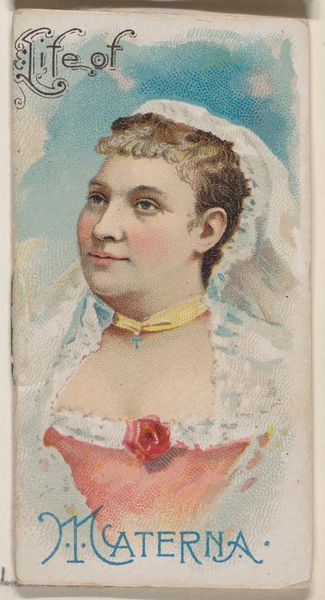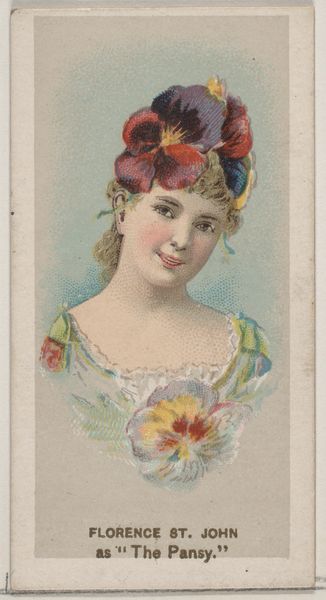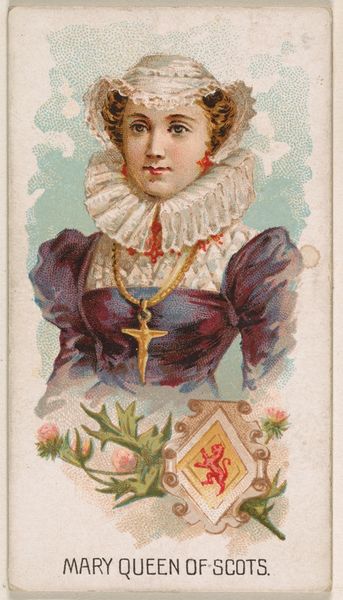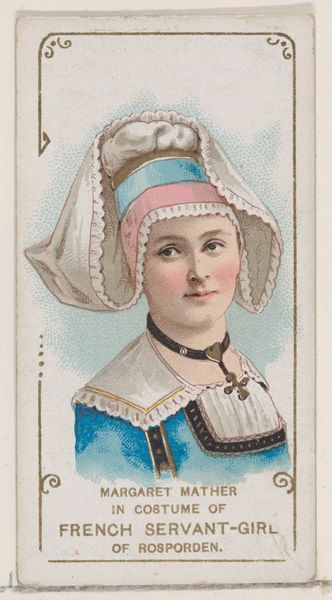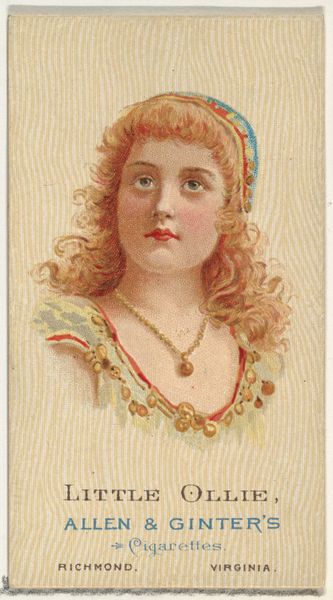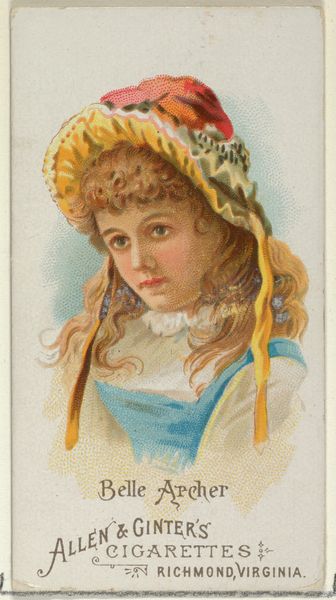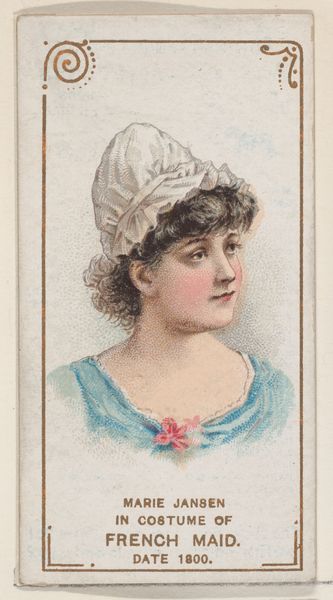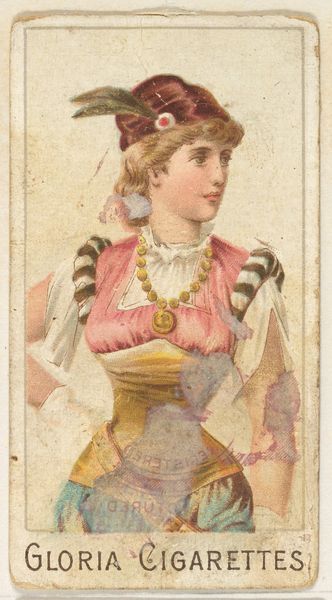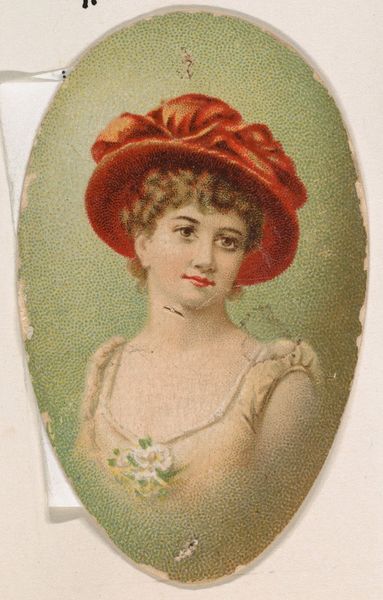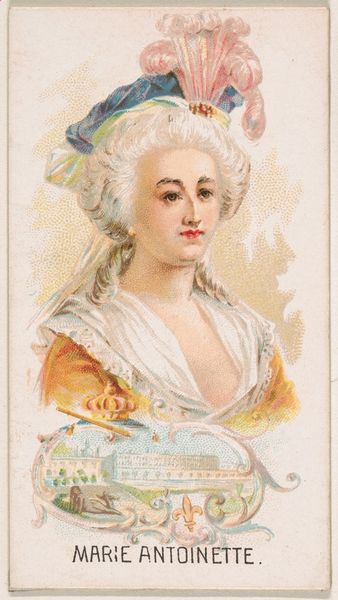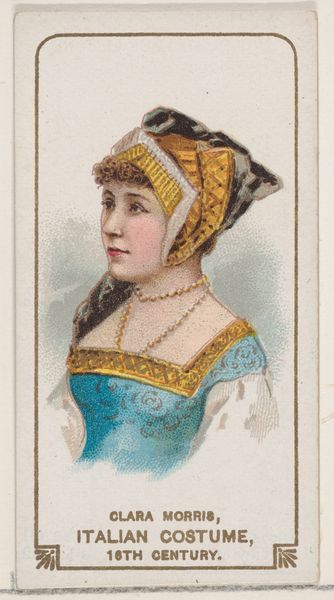
Example of display card, Louisa of Germany, from Leaders series (N222) issued by Kinney Bros. 1888
0:00
0:00
drawing, coloured-pencil, print
#
portrait
#
drawing
#
coloured-pencil
# print
#
figuration
#
coloured pencil
#
history-painting
#
portrait art
Dimensions: Sheet: 2 3/4 × 1 7/16 in. (7 × 3.7 cm)
Copyright: Public Domain
This display card, "Louisa of Germany", was printed by the Kinney Brothers Tobacco Company sometime in the late 19th century, using chromolithography. Chromolithography was an innovative printing technique that used multiple lithographic stones, one for each color, to create vibrant images. The process required skilled artisans who understood color theory and registration, ensuring the colors aligned perfectly. The rise of chromolithography was intertwined with consumer culture and industrial production. Cheap and attractive cards like these incentivized customers to buy tobacco products, building brand loyalty and generating revenue. Consider the amount of work involved in producing thousands of these cards. This was labor-intensive work, but it also democratized image-making to a degree. These cards allowed ordinary people to have access to colorful images, bringing art into everyday life. Looking at "Louisa of Germany" through the lens of materials and making helps us appreciate its historical significance, and to rethink traditional distinctions between commercial art and fine art.
Comments
No comments
Be the first to comment and join the conversation on the ultimate creative platform.
